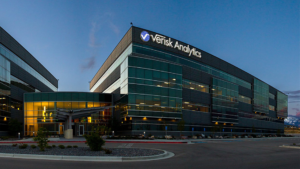A recent study by Hiscox showed that three out of four small businesses in the US aren’t protected against claims.
Still, many property insurance portfolios contain underinsurance blind spots, due to a lack of data. Most properties are not inspected yearly, even though many buildings are extended or renovated through the years. Insurtech Insights quizzes Spotr CEO, Dirk Huibers on the highs and lows of insuring commercial properties.
How big is the underinsurance problem in commercial properties?
This kind of exposure is what keeps insurance CEOs awake at night. Both brokers and insurers often have huge blind spots in their property insurance portfolios, mostly due to a lack of data. Illuminating these blind spots requires the help of new technology, like AI. It’s simply impossible to tackle underinsurance using traditional surveying methods.
The research from Hiscox reports that three out of four small businesses in the U.S. are underinsured, with a significant majority lacking understanding of what business insurance covers. Conducted in July 2023, the survey of 1000 small business owners revealed a widespread lack of basic insurance knowledge and a high rate of underinsurance, exposing owners to financial and legal risks. This however is not the first time an alarming report like this one came out. A research from Canada in december revealed that over 70% of commercial buildings is underinsured by at least 30% on average, while Howden found in their research that among 1,300 Aston Lark clients in the UK, 80% was underinsured by an average of 61%! Every year, new reports keep coming out about this topic, showing how important it is for business owners to keep their insurance updated yearly.
For insurers and brokers, dealing with underinsurance is like trying to solve a tricky puzzle. They have to figure out how much coverage someone needs, how much to charge for it, and make sure people understand what they’re getting. That can be extremely challenging if the data to support them isn’t there.”
What causes underinsurance in commercial buildings?
Underinsurance in commercial buildings has several causes. One of which is that they don’t get surveyed enough. Better yet; on average only 4% of buildings is yearly inspected. This is especially a big problem in large commercial property portfolio, where the biggest buildings often get checked, but the long tail of properties with lower values is completely ignored, leading to huge blind spots in exposure.
Rising inflation also plays a significant role in causing underinsurance in commercial property insurance portfolios. Here’s why: When inflation goes up, the prices for building materials and labor also increase. This means that if a building needs repairs or rebuilding after an accident, it’ll cost more than before. However, if the insurance coverage isn’t updated to reflect these higher costs, there’s a risk of being underinsured. In simpler terms, it’s like trying to buy something with an old price tag – you might end up not having enough money to cover the real cost. So, when inflation rises, it’s crucial for insurance plans to be adjusted accordingly to avoid being caught short when it’s time to make a claim.
Last but not least there’s the problem of outdated reinstatement costs. Outdated reinstatement costs are a big problem in commercial property insurance because they don’t always reflect the real rebuilding expenses. Here’s why:
- If buildings get bigger because of additions or extensions, the cost to rebuild them goes up, but the estimate might not catch up.
- Changes in activity, like turning a warehouse into offices, can also affect the rebuilding cost.
- If buildings get upgraded with things like solar panels, it makes them more valuable, which means it costs more to rebuild.
- Sometimes, the initial estimate for reinstatement costs is just wrong, to begin with, which sets the stage for the whole insurance plan to be off.
So, when these factors aren’t kept up to date, it’s like trying to budget for a project without knowing all the costs – meaning business owners might end up seriously underinsured when something goes wrong.”
Whose responsibility is it to avoid underinsurance?
Avoiding underinsurance is of course a collective effort of brokers, insurers ánd policy holders. However, I believe insurance brokers play a big role here. They have a duty of care to their clients, meaning they must act in their clients’ best interests. This includes understanding their clients’ needs, assessing their risks accurately, and recommending the right level of coverage. They should also check in regularly to see if anything has changed and if their clients need more coverage. If they find that a business doesn’t have enough insurance, it’s their job to let them know and help them fix it.”
What can be done about underinsurance in commercial buildings?
It might seem like an unsurmountable task, but brokers and insurers can take steps to tackle underinsurance effectively. Firstly, they need to inspect more of the buildings they cover to understand the risks better. A way to do this is using advanced technology, like AI, to gather up-to-date data on buildings instead of relying on rough estimates. Remote inspections powered by AI can be a big help here, allowing insurers and brokers to assess properties without needing to be physically present.
This is something we do at Spotr; we first gather images from sources like satellite and street images using a list of addresses given by our customers, constructing a comprehensive digital twin of every property in the portfolio. With our AI, we then conduct large-scale image inspections to identify characteristics such as materialisation, size, condition and typology. This gives brokers and insurers the data they need to make large scale analyses to detect underinsurance or accelerate their underwriting processes.
Secondly, insurance brokers have a duty to ensure their customers are properly protected. If remote inspections show that business owners might not have enough coverage, brokers should warn them and help them get the right amount of coverage they need. In other words, technology is going to be a big help here.
We’re just scratching the surface of what AI can do, but one thing is sure: the days of blindly indexing policies are over. We’re moving to a world where personalised pricing through up-to-date property data is the standard. At Spotr, we’re helping insurers get there by supplying them with up-to-date property data on their entire portfolio and accelerating the underwriting process with our digital twin platform.”
How can brokers and insurers avoid underinsurance in commercial buildings in the future?
To prevent underinsurance in commercial buildings across the industry, we need to take a few steps.
First, insurers and brokers should use advanced technology like AI to check buildings thoroughly and get accurate data. This helps them understand the risks better and figure out the right amount of coverage.
Second, there should be more regular checks on insurance policies to make sure they still match the actual value of the buildings.
Third, everyone involved—insurers, brokers, and property owners—should talk openly about insurance needs and any changes that might affect coverage.
Lastly, providing simple and clear information about underinsurance risks and how to avoid them can help everyone make better decisions. By working together and staying informed, we can reduce the chances of underinsurance and keep commercial properties safe in the future.
What future trends and opportunities do you see for brokers and insurers?
Looking ahead, insurance brokers and insurers have some opportunities and trends to think about regarding underinsurance in commercial properties. One big thing is using more advanced technology like AI and data analysis to understand risks better and calculate coverage more accurately.
But besides that, I think prevention is going to be a huge topic. In the next few years, we’ll see a huge increase in property damages due to extreme weather. We’ll need smart solutions to be able to keep insurance affordable. Prevention here is key, like keeping an eye on buildings in real-time and using data to predict what might go wrong. The role of brokers and insurers will then likely shift to not only pay out in times of damages, but also educate on what policy holders can do to prevent damage.
A huge opportunity I see for brokers and insurers is the offering of extra services, like advice on how to manage risks and insurance plans customised for different types of businesses. They can give advice on how to find and reduce risks. For example, they might suggest ways to make a specific business properties safer or have a plan for emergencies. Also, they can make tailored insurance plans that fit exactly what each business or property needs.
For instance, a restaurant might need different insurance than a factory. Making these tailored plans ensures that each business gets the right coverage. By offering these extra services, brokers and insurers can provide greater value to their clients and help them better protect their businesses from potential risks and losses.
About Dirk Huibers and Spotr

Dirk Huibers is CEO and co-founder of Spotr, Dutch AI-powered property data platform. Spotr distinguishes itself by its ability to scan properties anywhere in the world and deliver up-to-date, unique property datasets in no-time with a zero-hassle-implementation for customers.









